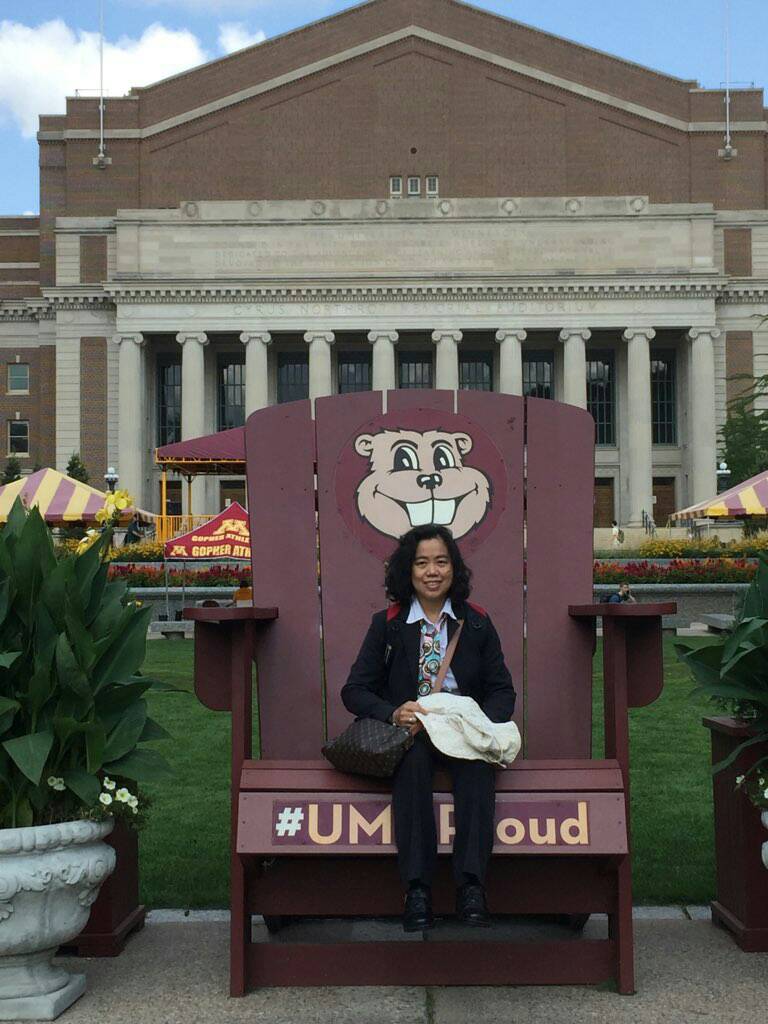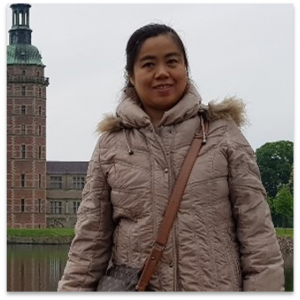Participating in the Fulbright exchange scholar program has given me an opportunity to broaden my view of US education systems. I am familiar with US higher education while receiving my Ph.D. from the University of Minnesota. Coming back to the US as a Fulbright scholar with my family and conducting research in the preschool and K-8, and acting as a parent has enriched my experience.
With an 11-year-old son, I participated in an American public middle school as a parent. Being a 6th grader and the oldest in an elementary school in Taiwan, my son became a freshman at Northeast Middle School in Minnesota. We arrived in the US on the day of the open house of the school. When we arrived at the school, we were surprised to see the welcome printed in different languages on the wall, including Chinese. We met the principal in the office, who welcomed us enthusiastically. He is very different from the serious principal in Taiwan, with rich intonation and body language. We were able to select courses in time and obtain the course schedule during the open house. Then, we visited every classroom teacher listed on the course schedule. The teachers introduced the course to each student and parent one by one, addressed questions they may have, and collected the contact information. I can feel their warm welcome and enthusiasm. There are frequent direct communication between teachers, students, and parents. The advisor sends out a progress reports every week, and there are parent-and-teacher meetings once a month and parent-and-teacher conferences once a quarter. The US school time is shorter than Taiwan one. Students in the middle schools go to school from 8:40 am-3 pm with an optional afterschool program till 5:30 pm. The school bus picked up my son at our door at 7:50 am and dropped him off at 3: 40 pm or 6:19 pm when there was an afterschool program. Breakfast, lunch, and snacks with the afterschool program are provided for free at school. The lunch was served in the cafeteria with choices between American and international food. The international food is not authentic, though. The Asian bowels were commented on as disgusting by my son, so he always chose American food. Students can choose activities they like in the afterschool program. My son chose basketball and boxing.
My impression on US middle schools are more like colleges in Taiwan. In Taiwan, middle school students have the same courses and stay in the same classroom. In the US, they meet different classmates in different classes with only three-minute breaks to move from classroom to classroom. However, my son said it was easier to make true friends in the US. I guess that was due to the small class size and group work in the class. US schools seem to address individual needs better. My son was placed in a regular English class after an English proficiency test. With learners of English as a second language in a regular English classroom, a second language expert co-taught the Language and Art class. The second language expert was a Spanish teacher, because most ESL learners in the US are Spanish speakers. However, my son knows nothing about Spanish. Later, they hired an academic coach who took Chinese in college, though he confessed to my son that he didn’t remember any. The class continued with three teachers and eight students. The English teacher prepared handouts of grammar and vocabulary for my son. The science teacher prepared word search worksheets for science terminology in every unit. The textbooks and assignments are stored in the Chrome book, a laptop computer. The students bring notebooks and Chrome book to school. The assigned readings are regular books rather than books designed for course use, and there is usually more than one. For example, the assigned readings for my son’s Language and Art class were novels just like college classes. After reading the novels, the students individually worked on a book project and gave peer feedback on shared google documents. Every student wrote a story and uploaded it on the Student Treasure website along with illustrations and received a free hard copy of the book. My son wrote about our trip to Florida. The classes involve rich hands-on experience. For example, in science class, every two students were given an ox’s eye and a pair of scissors to discover the structure of the eye. The course content is relevant to students’ life experiences. The students calculated the percentage of juice and interest rate in the math class. US education also helps students explore career opportunities as early as the 6th grade. They took an online personality test about their interest and ability and discovered the job opportunities in the social science class with a school counselor. Students can explore the details of the job, salary, and education required and prepare for their future careers. I had an opportunity to observe the classes more closely when the class went online in the last two weeks due to short of staff caused by COVID-19. The tone of voice of American teachers is friendly and encouraging. The telescope math class, a gifted math class, started with a problem. The students came up with solutions, and the teacher discussed their thoughts with them. The course content was incorporated into interesting online games. Students participated in class actively and happily. Going to school is my son’s best memory in the US.
My Fulbright research project is on the lexical development of English-Chinese bilingual preschoolers. I started data collection in the affiliated laboratory preschool of the Institute of Child Development at the University of Minnesota. It was difficult to get into the school for research. With human research approval from Taiwan, I still needed approval from the preschool, IRB of the University of Minnesota, a background check from the Department of Human Services, including fingerprints and parent consent. A class mixed around 15 students with 3-5 age with three teachers. They go to school 9-11 am. I was surprised that the students had class outdoors, even in the freezing winter. Nature is their classroom. They played with sand, snow, and stones, climbed the trees, rode bicycles, and read and had snacks sitting on the snow. The teachers were so patient that they allowed them to observe and play with everything on the way when moving from playground to playground. They were divided into small groups with different teachers when some groups came indoors to read or play in the gym. It was hard for me to bring them indoors for my study. I must spend time with them to earn their trust so that they are willing to come with me. In addition, it took a long time to walk them to the research room. There were only two children with Chinese-speaking parents in the preschool. They have Chinese as their home language and English as their school language. One true bilingual left the school after two sessions. I had never heard the other speaking Chinese. He was never spoken to in Chinese, though the adults spoke Chinese at home. Therefore, I sought a Chinese immersion school for more participants.
I shifted to Ying Hua Academy to conduct my study. It is a K-8 charter school in Minneapolis, but it’s a totally different world. All the instructions are conducted in Mandarin Chinese, and only Chinese is allowed in the school. Most students have English as their home language. Not only the medium of instruction but also the method of instruction is more Chinese. The teachers are the authority, and students are disciplined. The teacher’s tone of voice is assertive and demanding. They asked students to hurry up when moving around in the school. There is a specific time designated to use the bathrooms. The students lined up and took turns. About 30 students in one class face the teacher except for the kindergarteners, with five around a table. They learned Chinese characters from kindergarten. Frequent paper testing and assignments were observed. It was much easier to collect data at this school. I just showed up in their classroom at the scheduled time, and the teacher would ask the student to go with me. They were all quite happy to come out with me. They had conversations with me in Chinese spontaneously and followed my instructions. Therefore, my study was conducted quite efficiently though disturbed by COVID-19 quarantines sometimes.
I was glad to come back to my alma mater, University of Minnesota to interact with faculty and students in the Institute of Child Development and Institute of Linguistics. I attended lab meetings with my former advisor, Dr. Maria Sera, in child psychology on Mondays and linguistics colloquium on Fridays. I received feedback about my research project from both psychological and linguistic perspectives. I was impressed with the student’s quality and learning attitude. I was approached by students interested in my research area once I arrived. A Ph.D. student discussed her research design with me, and an undergraduate asked me about my research and what I did to end at my position. Undergraduates in our lab meeting can read journal papers and respond to review comments, and participate in colloquium actively. My students in Taiwan rarely visit my office hours, while American students really make use of their visiting scholars. It would be great if I can learn the tip to cultivate such active learners. I enjoyed being embraced in research during my Fulbright visit.
The most valuable part of my Fulbright experience is my professional and personal development in the US education and new life experience for my father and son.








